Often, before painting or new varnishing of a wooden surface, it is necessary to remove the old layer of varnish. There are several ways to do this: a varnish remover from a tree, a mechanical method, and heat treatment. The choice of a particular option often causes certain difficulties, since a person without skills is rarely able to independently determine independently. This results in damage to the processed material.
- Methods for removing varnish
- Chemical treatment
- Instructions for removing varnish from a wooden surface
- Stage one: flushing
- Second stage: film
- Stage Three: Varnish Removal
- Fourth stage: neutralization of chemical composition
- Mechanical cleaning
- Heat treatment
- Conclusion
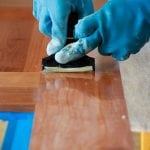
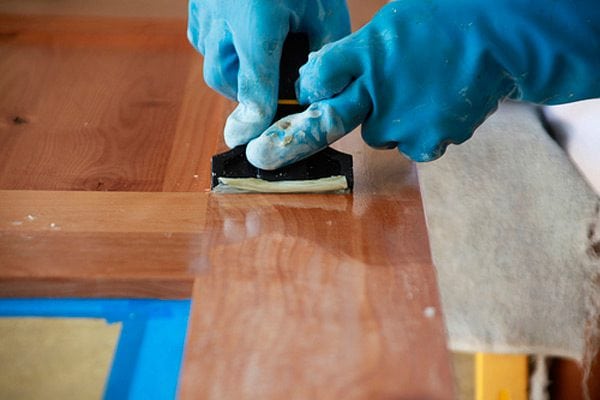
Below we will talk about the main methods of removing varnish, as well as the advantages and disadvantages of certain approaches.
to contents ↑Methods for removing varnish
It must be said right away that only the most popular surface cleaning techniques are covered here. There is no universal recipe that applies in all situations.
The selection of the method depends on many variables, among which:
- The type of base is of considerable importance, since there is a difference what exactly needs to be cleaned - furniture or parquet.
- The composition of the varnish. For different compositions, various options are relevant.
- Layer thickness. It is one thing to remove one layer, quite another - many old layers.
Chemical treatment
Chemical treatment of wood surfaces (also referred to as washing) is one of the most popular ways to remove varnish when it comes to delicate surfaces of furniture or other sophisticated objects. The chemical compositions may be powders, gels, specialized liquids or a common solvent.
The choice of a specific option depends on the task. When it comes to shellac, denatured alcohol is best. Liquids are most applicable to surfaces where there are not very many layers - up to three. The fact is that the liquid has the ability to quickly erode, which is why it simply cannot absorb deep enough. Powder chemistry is the best choice, if during large-scale work, since such materials can be stored for a long time. But gels and pasty materials are best suited for removing a significant number of layers of varnish or paint.
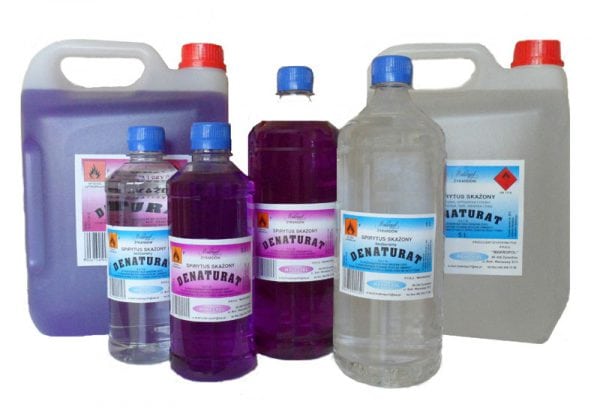
Recommendation: powders are created in such a consistency for easy storage and transportation. They should be used, diluted with water, which leads to the formation of a thick paste-like mass.
It is best to apply the mass in an upright position. This is not only more correct from the point of view of technology, but also more convenient. Gels and pastes can remove up to a dozen layers of the old coating at a time.
to contents ↑Instructions for removing varnish from a wooden surface
The entire process of removing the coating consists of four stages.
Stage one: flushing
We wet the brushes in chemical composition and apply a decent layer to the surface. We proceed from the rule that a brush should be carried out in one place only once, without repetition.
Second stage: film
To enhance the washing effect, we organize a compress, for which we cover the treated surface with a polyethylene film. The average waiting time for the effect of the compress is from 1 to 4 hours, depending on how many layers are to be removed. A good sign if the wash changed color and became dark brown or brownish, and the varnish began to swell.
to contents ↑
Stage Three: Varnish Removal
After the varnish has become softer, it must be removed with a spatula. The new spatula has too sharp edges. Therefore, it is recommended that they be slightly rounded with a grindstone. So work with wood will be more accurate.
The pressure on the expanded material must be careful. Probably, one approach will not work completely to get rid of varnish. Then you need to repeat the operation again. However, it happens that one pass of sandpaper is enough to remove the remaining varnish film.
to contents ↑Fourth stage: neutralization of chemical composition
Do not forget that the chemical composition remaining on the wooden surface must be washed off with either ordinary water or vinegar (500 g of water per 100 ml of vinegar). It is necessary to wash off the remnants of chemistry thoroughly, but not too long, since moisture is harmful to the wood, and the surface being treated is deprived of protection at this time. As soon as the washing is finished, the surface must be wiped well, and then the object should be transferred to a dry and blown place. Moreover, direct rays of the sun should be avoided. After drying, the wooden product can be varnished again.
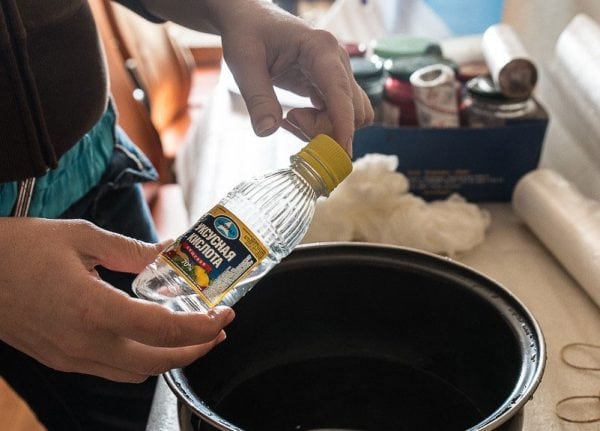
In addition to liquids, spray cans are also used. As a result of spraying the spray, a foam layer appears on the surface to be treated. Sprays are convenient to use, however, their drawback is the ability to wash off only insignificant layers.
Important! Work with chemical compositions should be carried out in compliance with safety rules. The room must be well ventilated. To protect you need to use special gloves, as well as respirators.
Acetone is also used as a solvent. First of all, a tissue compress is made, thoroughly soaked in acetone. Then the compress is applied to the places intended for cleaning. The compress must be covered with plastic wrap and wait 10-15 minutes.
to contents ↑Note! Removing the lacquer layer on furniture or particleboard panels can damage the surfaces, as the decorative film can be damaged. The best material for removing varnish is natural wood.
Mechanical cleaning
The essence of the technique consists in surface cycling. In other words, it is peeling off the lacquer layer with the use of a construction tool - cycles, which is a sharpened steel plate with a handle. Moreover, the handle is at an angle to increase pressure on the surface. The cycle can be purchased or made with your own hands.
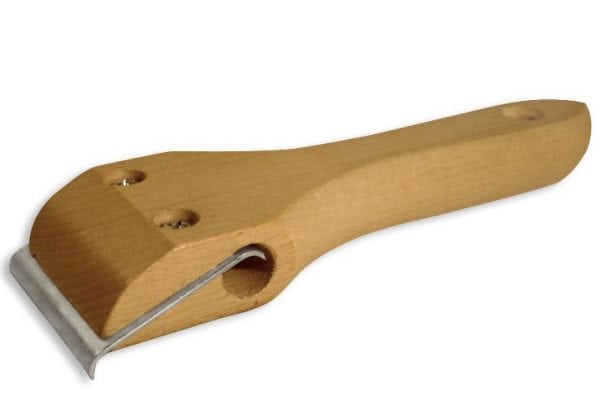
You can do without a special tool using glass. But this device has a drawback - it quickly dulls. If the choice fell on glass, you need to remember to use protective gloves so as not to get hurt.
If the varnish layer is thin, you can use the usual sandpaper. Moreover, it can be used both manually and by attaching sandpaper to the grinder. Grinders come in three types:
- tape
- vibrating;
- eccentric.
Vibrating machines are the most affordable.Such a tool can be used to clean furniture.
The workflow is as follows: on the "sole" is set sandpaper, which is used to process the surface. This method of removing varnish is very dusty, but compared to manual processing, this option will give a much more aesthetic surface.
Advice! Remember to protect your surroundings from dust. A plastic film will do for this.
The main plus of mechanical processing in comparison with chemistry is that toxic and unpleasant smelling substances are not used here. In addition, with careful work, such a cleaning method, more gentle with respect to wood than in the case of chemical compositions. The drawback of mechanics is one - the process is long and laborious.
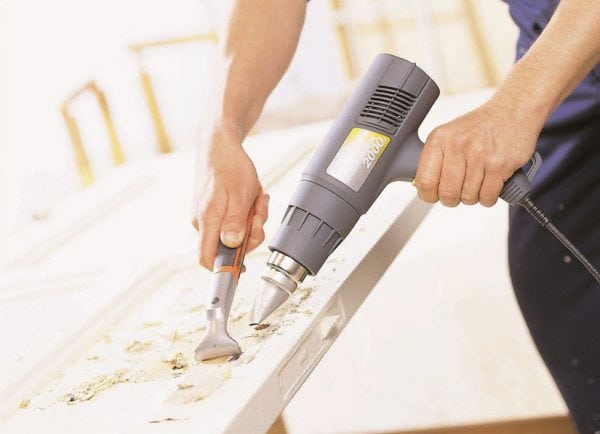
Advice! Since mechanical cleaning takes a lot of time and also requires accuracy, it may be more rational to use the services of a hired specialist. In addition, the specialist is equipped with professional equipment, which will improve the quality of work.
to contents ↑Heat treatment
The essence of this process is to heat the wooden surface, so that the varnish is less firmly held by the surface. In other words, the varnish begins to crack, after which it can be pry off with a tool (a chisel or spatula is suitable) and slowly removed.
Pay attention to the following nuances:
- During operation, you need to use protective ammunition (gloves and glasses), as well as ventilate the room. The fact is that when heated, the varnish emits toxic substances, and when the material is mechanically separated, pieces can bounce off of it. Also do not forget about fire safety.
- If the varnish is warmed up, but does not peel off, but is charred, you need to change the cleaning method and you can’t do without chemistry.
Tools required:
- Gas or gas burner. Such devices are quite inexpensive. However, it is necessary to use the burner with extreme caution, so work will be carried out with an open flame.
- Construction hair dryer. The device is similar to a household hair dryer, but differs in significantly greater temperature capabilities, warming up to 600 degrees.
Note! A standard household hair dryer is not applicable.
The main advantage of the thermal method is its high speed. However, one should not forget about the danger of overheating of the varnished surface, as in this case it may catch fire.
Work is done with both hands: one holds the hair dryer, which heats the surface, the second is a spatula for removing varnish.
to contents ↑Conclusion
In most cases, varnish can be cleaned on its own. If confidence in your own skills is not enough or the work is too delicate, it is best to contact specialists.

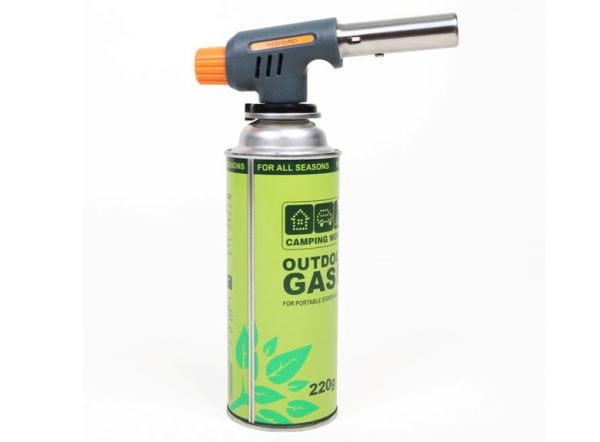




Hello!
I decided to remove the varnish from the dining table, 70s, Czech Republic.
I bought a wash for paints and varnishes ... I did everything according to the instructions, but even after 5 hours, the varnish under the covering film did not swell. What to do?
This is my first experience, so I don’t know what to do. Waiting for advice!
Buy body 700 paint wash in the car shop
Quote “Pay attention! A standard household hair dryer is not applicable. ” It is fully applicable at half power, for example, household Vitek 1000w for removing some varnishes
do not believe it, I removed the varnish with a simple, very hot hairdryer ... heated the wood and put a knife on the varnish, it becomes like a half-film film ... but for a long time but really)))
I heated it with a building hair dryer and brushed it with a wire brush with a not very stiff bristle. Carved platband very well removes varnish where you can’t crawl with a spatula.